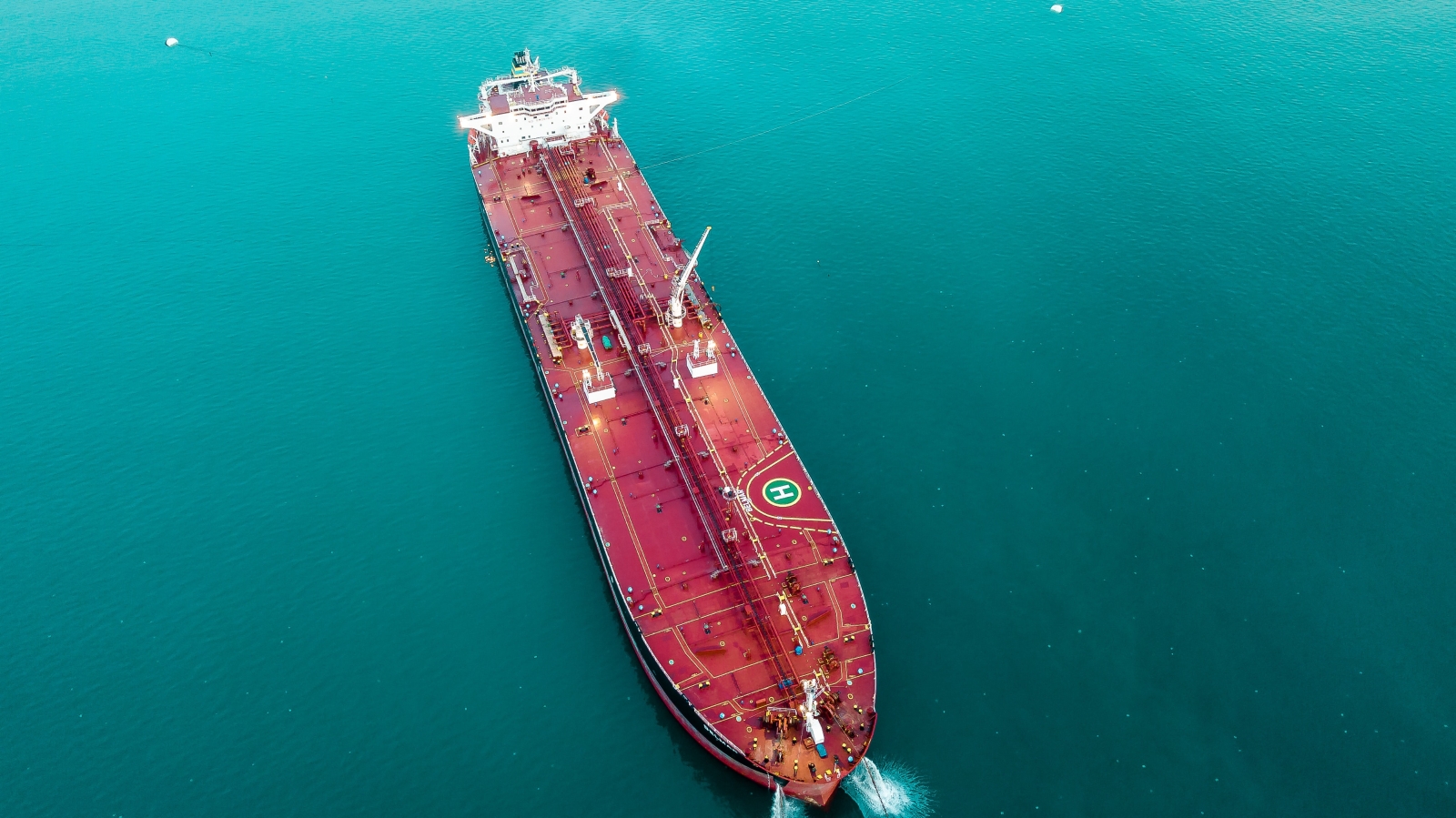Services
Related Pages
VGP Compliance Annual Program

We are experts in effectively managing all EPA’s VGP requirements
The Vessel General Permit (VGP) is a permit issued by the US Environmental Protection Agency (EPA) that regulates discharge water incidental to the normal operational conditions of commercial vessels greater than 79 feet in length, which are entering and/or operating in all US territorial waters.
The VGP includes general effluent limits applicable to all covered discharges as well as general effluent limits applicable to 27 specific discharge streams in addition to narrative water-quality based effluent limits, inspection, monitoring, recordkeeping, reporting requirements and additional requirements applicable to certain vessel types.
In this light Maritec provides a one-of-kind all-encompassing Annual Program to assist vessels voyaging into US territory waters stay on top of their entire VGP requirements for discharge waters in the areas of Ballast Water Treatment, Scrubber Water treatment, Bilge Water treatment, and Gray Water Treatment.
SCOPE & BENEFIT OF OUR ANNUAL PROGRAM
Maritec’s unique one-stop solution helps you meet your Discharge Water Compliance requirements as per VGP 2013.
Scope of Services:
- Expert onboard sampling and laboratory testing of Ballast Water, Scrubber Water, Bilge Water and Gray Water at required frequencies stipulated by the VGP regulation
- Accredited Testing Reports for submission to EPA
- Voyage tracking for optimal planning of testing at the most economical ports
- Annual Auditing of monitoring program
- Training and advisory services on request
- Notice of Intent (NOI) review
- Review of the monthly monitoring records submitted by crew
- Review the 27 effluents before annual report preparation
- Preparation & submission of Annual Report with Discharge Monitoring Report (DMR) on the official EPA website
Benefit from:
- Risk Mitigation: We help clients identify Testing Frequency for each vessel according to VGP requirements.
- Budget Control and Reduced Superintendent Workload: We help monitor the voyage to find the most economical ports for sampling/testing.
- Global Reach: We offer testing worldwide for convenient sampling and reporting.
- Technical Support & Training: We offer Audit & Crew Training and due-diligence support for vessel operational records review.
- Error Proof Processes: Ensures all layers of requirements are systematically met/submitted to EPA.
- Quick-response Times: Supports our customer queries on a real-time basis.
TESTING FREQUENCY REQUIRED FOR VGP COMPLAINCE
| Discharge Water Type | Parameters | Monitoring | High Quality Data - HQD | |
| Ballast water – All types of BWMS | Biological Testing | 1st Year | 2 times (consecutive) | |
| 2nd Year | 1 time (continuous) Revert to 1st year IF Fail |
|||
| Ballast Water – Electrolysis Chemical Injection Ozone Others |
Biocides Testing | 1st 10 discharges 1st 180 days |
3 times | |
| 2nd Year | 2 times | |||
| Scrubber Water | 3 Samples per vessel (2 times in the first year & 1 time per year thereafter) |
|||
| Bilge Water | 1 sample per year | |||
| Gray Water | 1 sample per time (2 times per year) |
|||
TESTING PARAMETERS FOLLOWED TO ENSURE VGP COMPLAINCE
Ballast Water Testing Parameters as below:
| Test Items | Method | |
| Biological Testing | Total heterotrophic bacteria | ISO 6222:1999, APHA 9215 B equiv. to SM 9215 B, ASTM D5465 |
| E.coli | ISO 9308-1:2014, EPA 1603, EPA 1103.1, APHA 9223B equiv. To SM 9223B, ASTM D5392 –93, Colilert® | |
| Enterococci | ISO 7899-2:2000, EPA 1600, EPA 1106.1, APHA 9230C equiv. To SM 9230C, ASTM D5259 –92(2006), Enterolert® | |
| Residual Biocides Testing | TRO (as Cl2) | Onboard Field test for Electrolytic type Or Chemical type (Chlorine based), Ozone type |
| Chlorine Dioxide | Onboard Field test for Chemical type (Chlorine dioxide based) | |
| Halosteric Acid | EPA Method 552.2 or EPA 552.3 | |
| Total Trihalomethanes | EPA Method 8260 | |
| Chlorite | EPA Method 300.1 (For Electrolytic and Chemical type) | |
| Chlorate | EPA Method 300.1 (For Electrolytic and Chemical type) | |
| Bromate | EPA Method 300.1 (For Ozone type only) | |
| Bromoform | EPA Method 8260 (For Ozone type only) | |
Scrubber Water Testing Parameters as below:
| Testing Regime | Monitoring Parameters | Test Methods | Sampling Position |
| VGP | pH (Field test by crew) | EPA Method | 1. Inlet Water (for background) 2. Water after the scrubber (but before any treatment system) 3. Discharge water. |
| 16 PAHs (Polycyclic Aromatic Hydrocarbons) | |||
| Nitrate | |||
| Nitrite | |||
| Metals | |||
| Dissolved Metals | |||
| Volume required: 3+1 Litres, the samples taken by crew during ME 85% MCR and stored in refrigerator after sampling. | |||
Bilge Water Testing Parameters as below:
| Test Item | Sampling position | |
| Oil and grease content | >n-Hexane Extractable Material (HEM; Oil and Grease) | Discharge from the vessel after bilgewater treatment system |
| O&G volume required: 1 litre | ||
Gray Water Testing Parameters as below:
| Test Item | Sampling position |
| Biochemical Oxygen Demand (Biochemical tests) | All Discharge points (e.g., sinks, laundry facilities, showers, galley kitchens, etc). Can consider collecting a sample of each of the discharge points and compositing them together for a representative sample of the vessel’s entire gray water. Water discharge, or sampling from an existing combined gray water collection tank. |
| Faecal Coliform Count, MFC Agar,44.5°C,24h (E-Cultural technique (membrane plate)) | |
| Escherichia coli Count, EC-MUG,44.5°C,24h (E-Cultural technique (membrane plate)) | |
| Total Suspended Solids (Gravimetry) | |
| pH at 25°C (Electrometry) | |
| Total Residual Chlorine (Spectrophotometry (UV/VIS)) |
Get in touch
If you have any questions or comments please don't hesitate to contact us
Services
Fuel Testing Solutions Water Compliance Services IHM & Recycling Asbestos Management Solutions NDT&UTMContact Us
192 Pandan Loop,
#05-27 Pantech Business Hub,
Singapore 128381
T +65 6271 8622